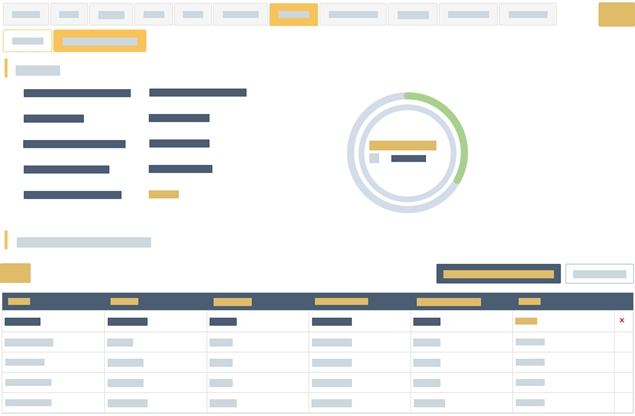Introduction to Revenue Recognition
Revenue Recognition is part of the Project Revenue Management feature in ITM Platform, which includes plan revenue, recognize revenue, actual revenue processing, and perform project account closure and financial analysis within the project life cycle.
Revenue recognition is an accounting principle that identifies the specific conditions in which revenue is recognized. The revenue recognition concept is part of accrual accounting and establishes that revenue should be recorded when it has been earned, not received.
Revenue versus cash timing:
Recognition principles are extensively outlined in IFRS and U.S. GAAP.
ITM Platform provides the following project revenue recognition methods.
The revenue recognition feature will distribute the total project revenue budget within the different periods of the project. Each method will use different formulas to calculate revenue recognition for each period.
You can choose to apply the same method for all projects in your company, specify a method per project type, or specify the method project by project. Before describing each of the methods, let us clarify the concepts of periods, actuals, forecast, amounts, percentages, how they apply to projects and how they affect revenue recognition.
Periods
Intuitively, you can tell a period is a range of time between two dates. ITM Platform identifies periods as days, weeks, or months. Months are more generally used for accounting and financial analysis purposes.
When a project is created, so are the periods. For example, say a project starts on November 15th and ends on February 10th. It will have four periods: November, December, January, and February.
Whenever a Revenue Recognition is made, it will apply to one period. Therefore, you will be able to recognize revenue for each month, using the method of your choosing.
Actuals and forecast
When you select a revenue recognition method, establish a revenue budget, and set the project start and end dates, the system will automatically create a forecasted revenue recognition per period.
Forecasted revenue recognition is the expected revenue recognition for a future period. The forecast can use the revenue recognition method applied to the project or, if you configure it that way, it can just make a homogeneous distribution along all periods.
Once forecasts have been calculated, you can create an actual revenue recognition, starting with the first period.
Actual revenue recognition is usually applied to past periods and represents the revenue that has been recognized.
Amounts and percentages
Whenever revenue recognition is made, it will generate four relevant values per period: amount and percentage both for the period and accumulated to the project.
Let’s see an example:
The project has a revenue budget of 100,000 $ and has four periods. Let us assume each period will have the same revenue recognition of 25,000 $ each.


